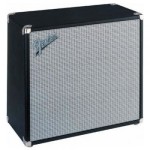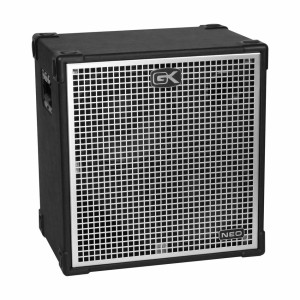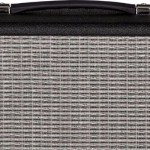Language
Speaker Cabinet Construction And Tone
Much like a guitar, there are multiple parts of a speaker cabinet that contribute to its overall tone. While major components such as the speakers themselves are obvious factors, other attributes play a role as well. Today, we’d like to focus on the rest of the story. Read below for more information on how size, wood type, and baffle construction affect a speaker cabinet’s overall tone.
 How To Match Amp Heads With Speaker Cabinets[/caption]
Even if they were to house identical speakers, cabinets of two different sizes will more than likely sound different. The biggest difference directly related to their size is bass response – larger cabs will produce more bass while smaller amps will produce less. If the cab is too big, however, the bass response can become overwhelming and boomy, something most players would like to avoid. But regardless of size, cabinets need to have enough airspace inside of them to give the sound waves produced by the speakers enough room to develop and create an accurate sound reproduction. The amount of airspace needed is dependent on the size of the equipped speaker or speakers.
How To Match Amp Heads With Speaker Cabinets[/caption]
Even if they were to house identical speakers, cabinets of two different sizes will more than likely sound different. The biggest difference directly related to their size is bass response – larger cabs will produce more bass while smaller amps will produce less. If the cab is too big, however, the bass response can become overwhelming and boomy, something most players would like to avoid. But regardless of size, cabinets need to have enough airspace inside of them to give the sound waves produced by the speakers enough room to develop and create an accurate sound reproduction. The amount of airspace needed is dependent on the size of the equipped speaker or speakers.
 The Fender Vibro-King VK-212B Guitar Speaker Cabinet gives you 140 watts (at 4 ohms) through a powerful pair of 12” Celestion Vintage 30 speakers. The closed-back cabinet is built with sturdy birch plywood, with a black textured vinyl covering.
Click here for more information.
The Fender Vibro-King VK-212B Guitar Speaker Cabinet gives you 140 watts (at 4 ohms) through a powerful pair of 12” Celestion Vintage 30 speakers. The closed-back cabinet is built with sturdy birch plywood, with a black textured vinyl covering.
Click here for more information.
 At ProAudioLand, we offer a great selection of guitar speaker cabinets and bass speaker cabinets at a great price! If you have any questions regarding the purchase of a speaker cabinet or any other piece of gear, don't hesitate to chat with one of our friendly PAL pros by using the live chat feature below or by calling us toll-free at 1 877-671-2200!
At ProAudioLand, we offer a great selection of guitar speaker cabinets and bass speaker cabinets at a great price! If you have any questions regarding the purchase of a speaker cabinet or any other piece of gear, don't hesitate to chat with one of our friendly PAL pros by using the live chat feature below or by calling us toll-free at 1 877-671-2200!
Open Back Versus Closed Back
Generally speaking, closed back cabinets tend to project their sound forward and create a punchier, more focused tone with crisper definition while open back cabinets are much more likely to fill the room they are in, providing a more natural and organic sound with a greater ambient quality. You can read more about these two types of cabs in our Open Back Versus Closed Back Speaker Cabinets article.Cabinet Size
[caption id="attachment_6053" align="alignright" width="150"] How To Match Amp Heads With Speaker Cabinets[/caption]
Even if they were to house identical speakers, cabinets of two different sizes will more than likely sound different. The biggest difference directly related to their size is bass response – larger cabs will produce more bass while smaller amps will produce less. If the cab is too big, however, the bass response can become overwhelming and boomy, something most players would like to avoid. But regardless of size, cabinets need to have enough airspace inside of them to give the sound waves produced by the speakers enough room to develop and create an accurate sound reproduction. The amount of airspace needed is dependent on the size of the equipped speaker or speakers.
How To Match Amp Heads With Speaker Cabinets[/caption]
Even if they were to house identical speakers, cabinets of two different sizes will more than likely sound different. The biggest difference directly related to their size is bass response – larger cabs will produce more bass while smaller amps will produce less. If the cab is too big, however, the bass response can become overwhelming and boomy, something most players would like to avoid. But regardless of size, cabinets need to have enough airspace inside of them to give the sound waves produced by the speakers enough room to develop and create an accurate sound reproduction. The amount of airspace needed is dependent on the size of the equipped speaker or speakers.
Wood Type
In general, we can say that cabinets made from solid woods contribute a lot of resonance while those made from plywood create much less. This means that plywood is more transparent, allowing you to hear more of the speaker’s own tone while solid woods add some of their own sound into the mix. While many players do like the added texture of solid woods (of which pine and cedar are the most common used in cabinet construction), they can also slightly blur notes. On top of that, the added resonance also creates more absorption of sound. This means that a cab made from solid pine wood might sound round and full, it generally won’t project sound waves as far as a quality-built plywood cabinet. It also won’t sound as loud and punchy. And speaking of plywood, the most common type used in high-end cabs is usually 11 or 13 ply Baltic Birch, known to offer a tight, powerful performance while maintaining an overall musical tone. Medium density fiberboard (MDF) and chipboard are two other non-solid woods used in cabinet construction, although they tend to be used on lesser quality cabs as the resonance they create can sound dead or atonal. The Fender Vibro-King VK-212B Guitar Speaker Cabinet gives you 140 watts (at 4 ohms) through a powerful pair of 12” Celestion Vintage 30 speakers. The closed-back cabinet is built with sturdy birch plywood, with a black textured vinyl covering.
Click here for more information.
The Fender Vibro-King VK-212B Guitar Speaker Cabinet gives you 140 watts (at 4 ohms) through a powerful pair of 12” Celestion Vintage 30 speakers. The closed-back cabinet is built with sturdy birch plywood, with a black textured vinyl covering.
Click here for more information.
Baffle Construction
A baffle is the front part of a cabinet where the speaker or speakers are attached to. Just like with the most other cabinet features, the type of baffle and construction come in a wide assortment of variations. A baffle that is made of comparatively thick plywood and is tightly attached to the rest of the cab will tend to have a good amount of punch and projection. And as with the construction of a cabinet made from good quality plywood, this type of baffle will give off a more transparent tone where you will mainly hear the speakers and less of the cabinet itself. On the other hand, a thinner baffle will naturally vibrate more, which means it will produce many more of its own sound waves that will blend with those of the speakers. When these thinner baffles are attached less firmly -- such as those found in vintage tweed amps, usually consisting of just one screw on each corner – you get what is known as a “floating baffle.” As you can probably already guess, cabs with thin, floating baffles can really start shaking when the amp is pushed to higher levels.Which Is Right For You?
Like every other piece of equipment in your setup, the right choice of speaker cabinet comes down to you. But by knowing what a certain type of cabinet can bring to the table as far as tone goes, you can better determine if a certain cab will best fit what sound you are going for. If you play hard rock, for example, a closed back cab made of plywood with an overall solid and sturdy construction is a classic choice. If you play blues, jazz or other genres where great sustain is a key factor, an open back cabinet made of solid pine might be the better choice. Still, it is ultimately up to you, what sound you like, and so on. Hopefully, the information above has given you a good idea of what the different factors of a speaker cabinet can give your overall tone and help you determine which is best for your setup. At ProAudioLand, we offer a great selection of guitar speaker cabinets and bass speaker cabinets at a great price! If you have any questions regarding the purchase of a speaker cabinet or any other piece of gear, don't hesitate to chat with one of our friendly PAL pros by using the live chat feature below or by calling us toll-free at 1 877-671-2200!
At ProAudioLand, we offer a great selection of guitar speaker cabinets and bass speaker cabinets at a great price! If you have any questions regarding the purchase of a speaker cabinet or any other piece of gear, don't hesitate to chat with one of our friendly PAL pros by using the live chat feature below or by calling us toll-free at 1 877-671-2200!

